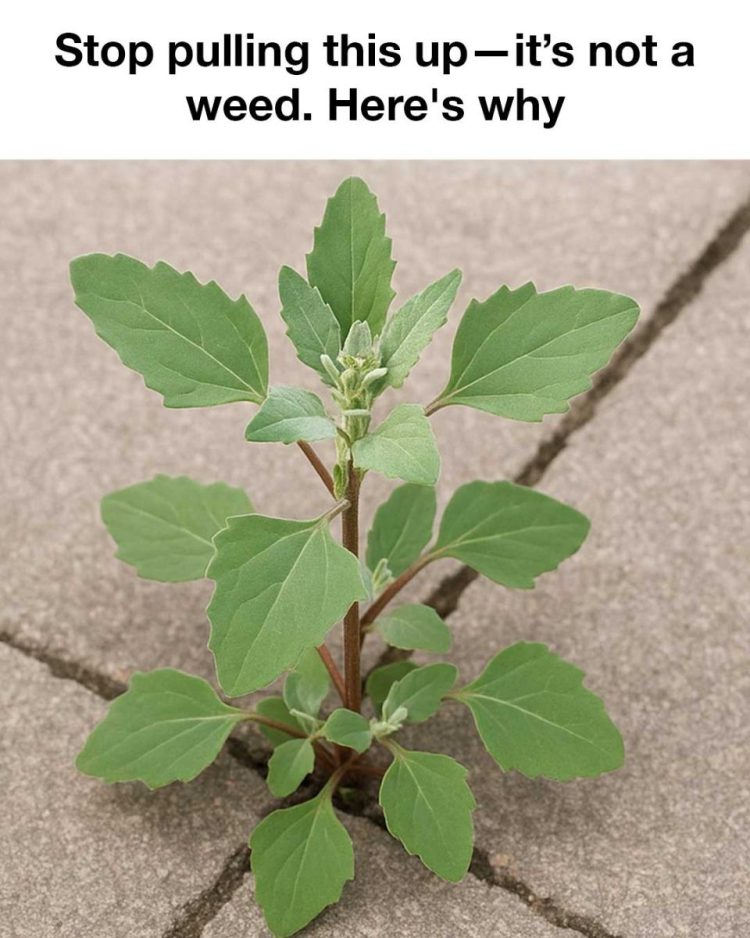In the quest for a pristine garden, many of us are quick to pull up any plant that doesn’t fit our vision of cultivated perfection. But in doing so, we might be uprooting a treasure trove of benefits. One such misunderstood plant is Lamb’s Quarters, often dismissed as a weed and swiftly removed without a second thought.
However, Lamb’s Quarters, scientifically known as Chenopodium album, is far from a mere garden nuisance. This resilient plant offers a myriad of benefits that range from nutritional to ecological. Before you reach for the gardening gloves, let’s explore why you should reconsider pulling up this remarkable plant.
1. Discovering Lamb’s Quarters: A Misunderstood Plant
Lamb’s Quarters is a member of the Amaranthaceae family, which also includes spinach and quinoa. It’s a hardy plant that can grow up to 1.5 meters tall, with leaves that are often dusted with a white, powdery coating. This plant thrives in a variety of conditions, from rich garden soil to the most neglected patches of land.
Despite its resilience, Lamb’s Quarters is often mistaken for a weed due to its rapid growth and ability to spread quickly. However, its presence in your garden can be a blessing rather than a curse, offering a host of benefits that are often overlooked.
2. Nutritional Powerhouse: The Superfood in Your Backyard
Lamb’s Quarters is not just another plant; it’s a nutritional powerhouse. The leaves are rich in vitamins A, C, and K, as well as essential minerals like calcium, iron, and magnesium. In fact, a 100-gram serving of Lamb’s Quarters can provide more than 200% of the daily recommended intake of vitamin A.
Additionally, this plant is a great source of protein, containing about 4.2 grams per 100 grams, making it an excellent addition to vegetarian and vegan diets. Its nutrient density rivals that of spinach, yet it often grows abundantly and requires little to no maintenance.
3. Culinary Uses: From Salads to Sautéed Dishes
Lamb’s Quarters can be a versatile addition to your culinary repertoire. The young leaves and tender shoots can be eaten raw in salads, providing a mild, spinach-like flavor. They can also be sautéed or steamed, making a nutritious side dish that pairs well with a variety of meals.
In addition to the leaves, the seeds of Lamb’s Quarters can be harvested and used similarly to quinoa. They can be cooked and added to soups, stews, or even ground into flour for baking. This adaptability in the kitchen makes Lamb’s Quarters a valuable plant for both novice and experienced cooks.
4. Medicinal Benefits: Nature’s Healer
Beyond its nutritional value, Lamb’s Quarters has been used in traditional medicine for centuries. It is known for its anti-inflammatory properties and has been used to treat conditions such as arthritis and skin irritations. The leaves can be made into a poultice to soothe insect bites and minor wounds.
Moreover, Lamb’s Quarters has been used as a natural remedy for digestive issues. Its high fiber content aids in digestion, while its mild laxative effect can help alleviate constipation. These medicinal benefits make it a plant worth keeping in your garden.
5. Soil Health: How Lamb’s Quarters Enriches Your Garden
Lamb’s Quarters is not just beneficial for humans; it also plays a crucial role in maintaining soil health. The plant’s deep root system helps to aerate the soil, improving its structure and drainage. This can be particularly beneficial in compacted or clay-heavy soils.
see continuation on next page
